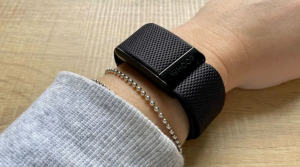
Image source: Pexels
Experiencing dropped calls or the dreaded “No Service” message? If you've held onto your phone for a few years, you might be wondering: do older phones get worse reception? It's a common frustration, and the answer is nuanced. Your phone's internal technology – from its antenna design to its modem capabilities – plays a vital role in how it connects to cell towers. As networks evolve and your device ages, signal performance can indeed degrade. This deep dive explores the intricate tech behind your phone's signal. We'll uncover common reasons for signal degradation over time and provide practical, up-to-date solutions for 2025 to boost your connection and keep you reliably in touch. You'll understand exactly what's happening inside your device and learn actionable steps to stay connected.
The Science of Signal: How Your Phone Connects
Understanding how your phone connects to the network is key to comprehending signal quality. The invisible waves enabling calls and data rely on a complex infrastructure and your device's capabilities. This section delves into the science behind cellular connectivity, addressing the question: Do older phones get worse reception?
Understanding Cell Signal Strength (dBm)
Cell signal strength is measured in decibel-milliwatts (dBm). This unit quantifies the power of the radio signal your phone receives. The scale ranges from very negative numbers (weak signal) to numbers closer to zero (strong signal). For example, -50 dBm is excellent, while -120 dBm is virtually unusable. Numbers closer to 0 dBm indicate stronger signals.
How Network Bands (4G LTE, 5G) Affect Older Devices
As mobile networks advance with technologies like 4G LTE and 5G, older devices can experience diminished reception. This is because older phones may lack the necessary hardware to connect to these advanced network bands. As carriers phase out older technologies and prioritize newer ones, devices incapable of supporting these bands will struggle to find a signal, leading to weaker reception. This directly answers: Do older phones get worse reception? Yes, especially as networks upgrade.
| Feature/Device | Older Phone (e.g., 3G-only) | Newer Phone (e.g., 4G/5G Capable) |
|---|---|---|
| Network Support | Primarily 3G | 4G LTE, 5G |
| Signal Strength | Potentially weaker on newer networks | Stronger on newer networks |
| Future Proofing | Limited | High |
| Data Speeds | Slower | Faster |
The Role of Cellular Towers and Your Proximity
Your proximity to cellular towers is the most significant factor influencing signal strength. These towers are the physical infrastructure that broadcasts and receives cellular signals. Being closer generally means a stronger, more reliable connection. Conversely, rural areas, dense urban canyons, or underground locations can significantly impact signal strength, creating ‘dead zones' with poor or non-existent reception. This distance is a primary reason why some users experience better reception than others, regardless of their phone's age.
Why Older Phones Can Get Worse Reception
A common question is, “Do older phones get worse reception?” The answer is often yes, due to several interconnected factors. While newer devices boast advanced antenna technology and optimized software, older models can face challenges that diminish their ability to connect reliably. Understanding these reasons can help manage expectations and troubleshoot issues.
Aging Hardware: Antenna Degradation and Battery Health
Over time, internal components like antennas can degrade, impacting signal reception. The delicate circuitry and materials within an antenna can wear down from everyday use, minor impacts, and environmental exposure. While specific data on antenna lifespan isn't readily available, materials in electronics are known to degrade. Furthermore, declining battery health can indirectly affect reception. As batteries age, they may struggle to provide consistent power to all components, potentially impacting the modem's ability to maintain a strong signal, especially during peak demand.
Software and Firmware: The Importance of Updates
Outdated software or modem firmware can lead to compatibility issues with newer network technologies. Cellular networks constantly evolve, introducing new standards and protocols for improved speed and efficiency. Older phones, if not updated regularly, may lack the necessary software to communicate effectively with these newer network infrastructures. This can manifest as dropped calls or slower data speeds, even when a signal is present.
Physical Obstructions: Cases, Grip, and Environment
Beyond internal factors, external elements can significantly influence reception. Certain phone cases, especially those made of thick metal or containing metallic components, can physically block the antenna, weakening the signal. How you hold your phone also plays a role; covering the antenna area with your hand can create a barrier. The environment itself is a factor, with signal strength naturally decreasing in areas with dense construction or underground locations.
Network Congestion: Sharing the Airwaves
Network congestion is a significant contributor to poor reception, affecting all phones but potentially older ones more noticeably. In crowded areas, such as concerts or busy urban centers, available bandwidth on cellular towers is shared among many users. This high network traffic can lead to ‘bars but no service' issues, where your phone indicates a signal but cannot establish a stable data or voice connection. While this is a network-side problem, an older phone's less efficient antenna or modem might struggle to maintain a connection under these demanding conditions compared to a newer, more capable device. The decline in reception for older phones is a multifaceted issue stemming from hardware wear, software limitations, physical interference, and network conditions.
Actionable Solutions to Boost Your Signal in 2025
Experiencing a weak cellular signal can be frustrating, impacting everything from calls to internet browsing. Fortunately, several practical strategies can improve your connection in 2025. Understanding your device and network nuances can lead to significant improvements, even for those wondering, “Do older phones get worse reception?” While age can contribute to hardware degradation, many signal issues are addressable through simple adjustments and technological solutions.
Quick Fixes: Restart, Airplane Mode, and Grip Adjustments
Often, the simplest solutions yield the most immediate results. A quick restart of your phone can clear temporary software glitches hindering signal reception. Similarly, toggling Airplane Mode on and off forces your device to re-establish a connection with the nearest cell towers. How you grip your phone can sometimes interfere with the antenna. Experimenting with your grip, particularly avoiding covering the antenna areas (often on the top and bottom edges), can make a subtle but noticeable difference. These quick fixes are the first line of defense against dropped calls and slow data speeds.
Leveraging Wi-Fi Calling and Network Settings
When cellular signal is consistently weak, enabling Wi-Fi Calling is a game-changer. This feature allows your phone to make and receive calls and texts over a Wi-Fi network, bypassing the need for a strong cellular signal. Ensure this setting is activated in your phone's network or call settings. Additionally, exploring your phone's network settings can reveal options like preferring a specific network type (e.g., 4G over 5G if 5G is spotty) or manually selecting your carrier. These adjustments help your device connect to the most stable available network.
The Power of Signal Boosters for Consistent Coverage
For persistent signal issues within a home or office, cell phone signal boosters offer a robust solution. These devices capture existing weak cellular signals, amplify them, and rebroadcast them within a specific area. This creates a stronger, more reliable signal zone, significantly improving call quality and data speeds. While an initial investment, boosters provide consistent, long-term improvement to coverage where it's needed most.
When to Consider a Phone Upgrade or Carrier Change
If other solutions prove insufficient, upgrading your phone or switching carriers are options to consider. Some older phones may indeed experience diminished reception due to aging hardware, making a new device a potential solution. However, these options typically involve significant financial outlay.
| Solution Type | Potential Cost | Effectiveness for Signal Issues | Implementation Complexity |
|---|---|---|---|
| Restart/Airplane Mode | مجاناً | Temporary/Situational | Very Low |
| Wi-Fi Calling | مجاناً | High (when Wi-Fi is available) | Low |
| Signal Booster | Moderate to High | High (for indoor coverage) | Moderate |
| Phone Upgrade | High | Variable (depends on model) | Moderate |
| Carrier Change | Variable | Variable (depends on network) | Moderate |
Ultimately, a combination of these actionable solutions can dramatically boost your signal in 2025, ensuring you stay connected when it matters most.
FAQ (Frequently Asked Questions)
Q1: Do older phones inherently have worse antennas than newer phones?
A1: Yes, generally speaking. Newer phones are designed with more advanced antenna technology that is optimized for current network bands (like 5G) and often incorporate multiple antennas for better signal diversity and reception. Older phones might only support older network bands (like 3G or early 4G) and have simpler antenna designs, making them less efficient on modern networks.
Q2: Can a phone case actually weaken my signal?
A2: Absolutely. Certain phone cases, especially those made with thick metal, metallic coatings, or containing magnetic components, can act as physical barriers that interfere with your phone's antenna. This interference can significantly degrade signal strength, leading to dropped calls and slower data speeds. It's often recommended to test your signal with and without a case.
Q3: Is network congestion the same as a weak signal?
A3: While they can feel similar, they are distinct. A weak signal means your phone is too far from a cell tower or there are physical obstructions blocking the signal. Network congestion occurs when too many users are trying to access the same cell tower simultaneously, overwhelming its capacity. Your phone might show a strong signal (bars), but you experience slow data or dropped calls because the network itself is overloaded. Q4: What is Wi-Fi Calling and how does it help with weak cell signals?
A4: Wi-Fi Calling is a feature that allows your smartphone to make and receive calls and text messages over a Wi-Fi network instead of relying on the cellular network. If your cellular signal is weak or non-existent, but you have a stable Wi-Fi connection, Wi-Fi Calling can provide a reliable way to communicate. You typically enable this feature in your phone's network or call settings.
خاتمة
In conclusion, the question of whether older phones get worse reception is a valid concern, and as we've explored, the answer is often yes. Technological progress and the evolving landscape of cellular networks can leave older devices struggling, leading to frustrating dead zones and dropped calls. However, this doesn't have to be your reality. The good news is you're not powerless against weakening signals. By understanding the underlying causes, you can take proactive steps to reclaim reliable connectivity. Begin with the simplest, most cost-effective solutions: ensuring your phone's software is up-to-date and experimenting with how you hold your device. For immediate relief in challenging areas, Wi-Fi calling offers a fantastic workaround. When those don't suffice, investing in a reputable cell phone signal booster can dramatically transform your signal strength, turning weak spots into strongholds. Ultimately, a thorough evaluation of your needs against your budget will guide you toward the best path forward, whether that's a strategic phone upgrade or a carrier switch. Don't let a fading signal dictate your communication. Take control today! Are you ready to conquer those persistent dead zones? Explore our curated selection of the best 2025 signal boosters to discover the perfect solution for your home or office and experience a stronger, more reliable connection.








